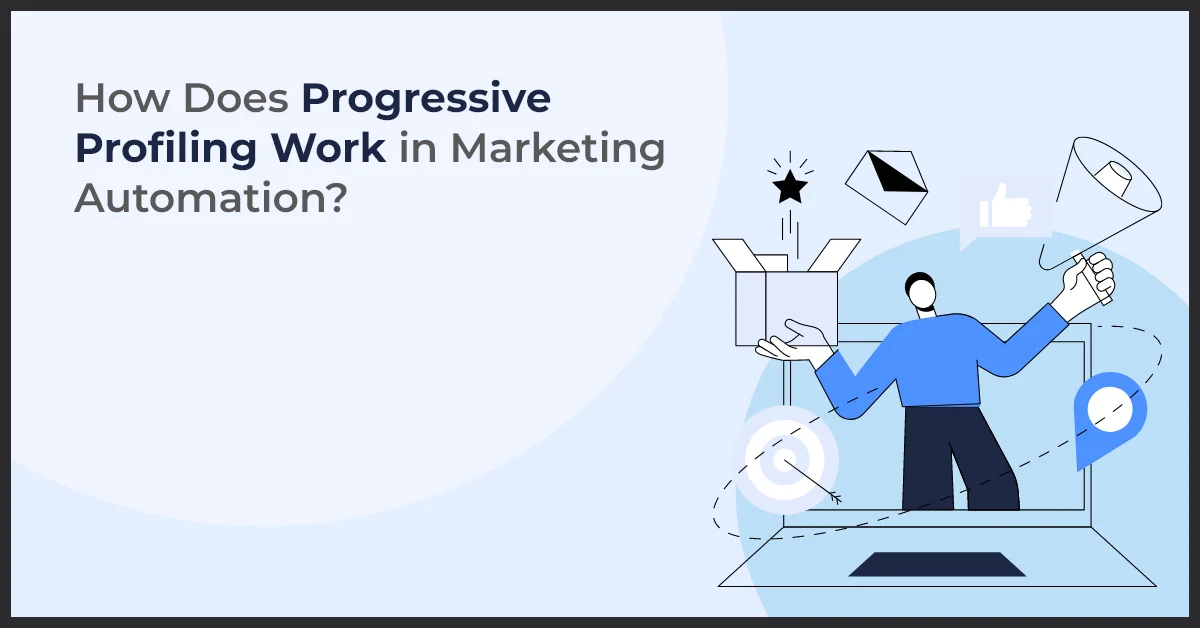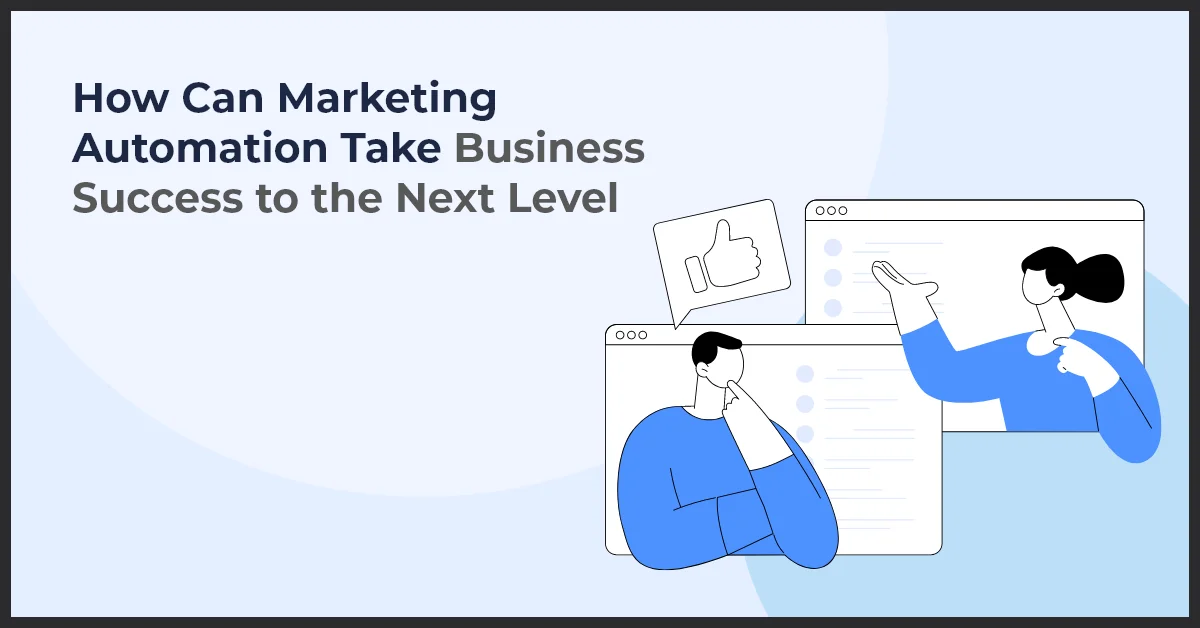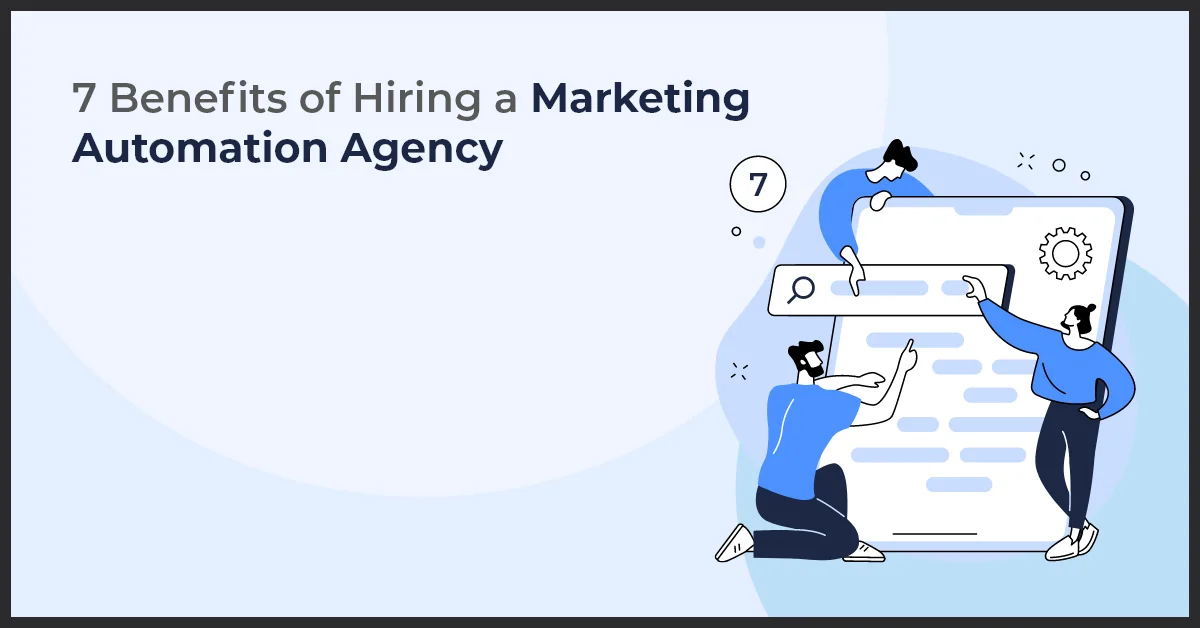How Does Progressive Profiling Work in Marketing Automation?

Published on: November 6, 2019
Updated on: July 02, 2024
656 Views
- Marketing Automation
11 min read
Most people think progressive profiling is just a website form thing. Yes it is, in a way, but it is way more than that. Beside improving your initial conversion rates for gated content it must compliment your customer's journey. It has a much wider impact because it is an integral part of your content engagement strategy.
Progressive profiling helps in optimizing sales by providing more qualified leads, better content distribution, customized prospect interaction, and accelerates the customer buying decision. It allows marketers to ask detailed questions to prospects as they move closer to sales decisions. This provides more qualified leads to the salespeople, which, ultimately, improves the Return on Marketing Investment (ROMI).
Understanding Progressive Profiling
Progressive profiling is a marketing automation strategy that allows marketers to gradually acquire and collect information about their leads and consumers through several encounters. Rather than bombarding prospects with lengthy forms immediately, progressive profiling divides the information-gathering process into smaller, more manageable segments.
Marketers can use progressive profiling to show prospects with shorter forms or surveys at first, often asking for basic information such as name and email address. Additional fields and questions are dynamically offered to capture more specific data as the prospect engages in future interactions, such as filling out forms, downloading information, or engaging in surveys.
How Does Progressive Profiling Work in Marketing Automation?
As far marketing automation is concerned; progressive profiling can work on every stage of the buyer’s journey. It’s all enabled by dynamic web forms in marketing automation solutions. It asks for information in iterations and for returning visitors, the dynamic web form can detect which information has already been asked and ask the next level of information from him.
Check out the following on how the progressive profiling process works throughout the buyer’s journey:
- Awareness Stage. A new visitor comes to your website and downloads any piece of content, in exchange for a filling a web form having fields of basic information including his/her name and email address. At this stage, you shouldn’t ask for the phone number, this lead is at the top of the funnel and let’s nurture it.
- Interest Stage – The visitor may return back and ask to download another piece of content from your website. The lead may click a call to action (CTA) to get more content i.e., some white paper, here you can ask for next-level information including his job role and job title.
- Consideration Stage – If the lead again comes back and asks for another content or access to more information that means he is in the ‘consideration stage’ now. Here you can ask about further details such as his company name, size, and the number of employees in his/her team.
- Decision Stage. The moment this prospect returns and requesting more advanced information, such as a product video demo, that means he has reached to decision stage.
| Buyer's Journey Stage | Information Collected | Relevance |
| Awareness | Name, Email | Basic contact information to nurture leads and provide initial engagement. |
| Interest | Job Role, Job Title | Understanding the prospect's professional background to personalize content and tailor messaging. |
| Consideration | Company Name, Company Size, Number of Employees | Gathering details about the prospect's company to assess fit and identify potential buying groups. |
| Decision | Product Preferences, Budget, Purchase Timeline | Obtaining information about the prospect's specific needs and readiness to make a purchase decision. |
At this stage, you can ask for more information and/or hand it off to sales for active followup. Having all the information and intelligence collected over time this lead is now sales-ready.
Key Components of Progressive Profiling
Dynamic Form Fields
Dynamic form fields are a fundamental component of progressive profiling. Dynamic form fields adapt and modify based on the information already obtained from the prospect, as opposed to static forms, which offer the same set of fields to every prospect.
Marketers use dynamic form fields to reveal or conceal particular fields based on the prospect's past replies. If a prospect has previously submitted their firm name, for example, the form dynamically displays fields pertaining to their job description or industry. This method guarantees that prospects are asked relevant and targeted questions, which speeds up the data-collecting process.
Conditional Logic and Branching
Dynamic form fields are strongly connected to conditional logic and branching. Based on the prospect's past replies, they enable marketers to construct a logical flow inside the progressive profiling process.
Marketers use conditional logic to design rules and criteria that govern which fields are displayed next. For example, if a prospect displays an interest in a specific product, the form might expand to ask additional precise questions about their preferences or wants for that product. This intelligent branching provides prospects with a personalized experience and ensures that they are asked the most pertinent questions at each level.
Integration with Customer Relationship Management (CRM) Systems
Integration with customer relationship management (CRM) systems is critical for progressive profiling to be effective. The acquired data can be automatically transmitted and saved in a central database by linking the marketing automation platform to a CRM system.
Marketers integrate and organize data obtained through progressive profiling by integrating with CRM systems. This connectivity guarantees that the essential data obtained from each prospect is easily accessible for segmentation, lead scoring, and tailored communication.
Data Validation and Quality Control Measures
To verify the accuracy and integrity of the information gathered by progressive profiling, data validation, and quality control techniques are required. Marketers must perform validation tests to ensure that the data submitted by prospects is correct and comprehensive.
Data validation can include tests for email format, phone number format, zip code validity, and even business-specific validation criteria. Marketers eliminate mistakes, reduce data inconsistencies, and maintain a high standard of data quality by using these steps.
Benefits of Progressive Profiling
Progressive profiling provides equal value exchange in the relationship between businesses and their prospects. One hand where the prospects get the desired information, on the other hand, the companies get the relevant data that allows them to create more effective marketing campaigns. Here is a list of some direct and prominent benefits that you can; as a marketer gets from progressive profiling.
- Qualifying leads. By collecting information from the prospect, you can better decide at what stage your prospect is in and can better decide the next course of action to move him or her. This way you can pass only sales-ready leads to your sales team.
- Brush up on your buyer personas. Progressive profiling is built around specific information about personas that allows you to create effective nurture campaigns. Personas become an important part of your lead engagement strategy.
- Speeds up the buyer’s journey. Having higher engagement at the initial stages of the journey and more accurate information you can be more confident about your lead nurture strategy. Plotting a strong nurture path beyond initial engagement accelerates the leads’ journeys leading to shorter sales cycles.
- Increase conversion rates. It has been proved time and again that progressive profiling leads to higher conversion rates not just at the top of the funnel but also at the Middle and the bottom of the funnel.
- Improves customers’ experience. Designing your web experiences strategically can do wonders. People hate to provide large amounts of information in one go and/or answer the same question again and again. Rather they feel personal interaction when you recognize them on their return visit and ask for further information.
Best Practices for Implementing Progressive Profiling
Progressive profiling is a powerful strategy in marketing automation. To make the most of it, consider the following best practices:
Define Your Data Collection Strategy
Start by defining a clear data collection strategy aligned with your marketing objectives. Determine the key data points you need to collect from prospects to support personalization, segmentation, and lead qualification.
Balance the Number of Form Fields
Strive to strike a balance between the number of form fields and the value of the information you're collecting. Begin with fewer required fields to reduce barriers to entry, and progressively ask for additional information over time. Prioritize fields that provide the most value for your marketing efforts.
Design a User-Friendly Experience
Create a seamless and user-friendly experience for prospects. Clearly indicate the progress and number of steps involved in the progressive profiling process. Ensure responsive and mobile-friendly design for easy form completion on various devices. Simplify the interface, provide clear instructions, and offer real-time validation to guide prospects through the process.
Test and Optimize Your Progressive Profiling Strategy
Continuously test and optimize your progressive profiling strategy to improve results. Conduct A/B tests to compare different variations of your forms, such as the number of fields or the order of questions. Monitor conversion rates at each step and identify potential drop-off points. Collect feedback from prospects to understand their experience and make iterative improvements.
Ensure Data Privacy and Compliance
Respect user privacy and comply with data protection regulations. Clearly communicate your privacy policies and obtain explicit consent from prospects. Implement data protection measures to safeguard prospect information and adhere to legal requirements.
Regularly Review and Update Form Fields
Regularly review the form fields used in your progressive profiling strategy. Ensure that the fields align with your evolving marketing needs and objectives. Remove any redundant or unnecessary fields to streamline the data collection process.
Overcoming Challenges and Limitations
Ensuring Data Accuracy and Integrity involves implementing data validation checks to verify the information provided by prospects. Regularly cleansing and updating the database helps maintain accurate and reliable data. Integration with CRM systems ensures data consistency across platforms, reducing discrepancies.
Addressing User Privacy Concerns is crucial to building trust. Transparently communicate privacy policies, clearly outlining how data will be collected, stored, and used. Obtain opt-in consent to ensure prospects provide explicit permission for data collection and usage. Implement robust data protection measures, such as encryption and access controls, to safeguard prospect information from unauthorized access or breaches.
Prioritize value exchange by offering valuable content, personalized recommendations, or exclusive offers in exchange for prospects' information. Deliver progressive value by gradually providing benefits at each stage of the progressive profiling process, showcasing the advantages of providing additional information. Minimize repetition by leveraging the data already collected to customize future interactions and minimize redundant questions. This helps prevent prospects from feeling overwhelmed or fatigued during the data collection process.
Mitigating Data Loss or Breaches is a critical consideration in progressive profiling. Implement regular data backup and recovery procedures to ensure that collected data is not permanently lost in case of technical failures or accidents. Secure data storage using industry-standard security measures, such as encryption and access controls, to protect prospect information from unauthorized access. Comply with relevant data protection regulations, such as GDPR or CCPA, to ensure your progressive profiling practices align with legal requirements.
Tools and Technologies for Implementing Progressive Profiling
Overview of Marketing Automation Platforms that Support Progressive Profiling
Several marketing automation platforms support progressive profiling as a core feature. These platforms provide comprehensive solutions for capturing and managing prospect data. Some popular marketing automation platforms that support progressive profiling include:
HubSpot: HubSpot offers a progressive profiling feature within its marketing automation suite. It allows marketers to create dynamic forms and collect additional information from prospects over time.
Marketo Engage: Marketo Engage enables progressive profiling through its Smart Campaigns feature. Marketers can progressively collect data and personalize experiences based on prospect interactions.
Pardot: Pardot, part of Salesforce's marketing automation suite, provides progressive profiling capabilities. It allows marketers to create custom forms with conditional logic to capture additional prospect data.
Features and Capabilities of Popular Tools
Dynamic Form Builder: These tools provide an intuitive interface for creating and customizing dynamic forms with conditional logic. Marketers can define rules to show or hide specific form fields based on prospect data.
Data Integration: Marketing automation platforms offer integration with CRM systems, allowing seamless transfer of prospect data between platforms for a unified view of customer information.
Lead Scoring: Many tools provide lead scoring functionality to assign scores based on prospect data and behavior. This helps prioritize and identify high-value prospects for targeted marketing efforts.
Personalization and Segmentation: Progressive profiling tools often support personalization and segmentation capabilities. Marketers can leverage the collected data to create tailored experiences and targeted campaigns for different audience segments.
If you are looking to improve your marketing automation suite; you can’t by-pass the thing called progressive profiling. Allows us to partner with you in these efforts, write an email to us at info@growthnatives.com



